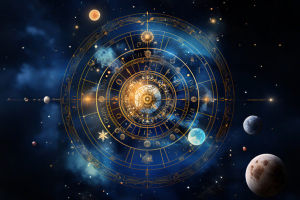Dear Lykkers! Are you a nature lover? The desert moon is an awe-inspiring natural phenomenon, casting its soft, silvery glow over the vast, arid landscapes.
The absence of light pollution in these remote areas allows for an extraordinary clarity of the night sky, making the moon appear brighter and closer than ever.
The Mystical Glow of the Desert Moon</h3 >
In the desert, the moon takes on a unique significance. Its luminous presence contrasts with the stark, sun-scorched land, creating an almost ethereal atmosphere. The desert moon illuminates the surroundings, casting long shadows and creating a serene yet mysterious ambiance. As temperatures drop sharply after sunset, the cool moonlight provides a refreshing relief from the day's intense heat.
The Science Behind the Desert Moon's Brilliance
Why the Moon Seems Brighter in the Desert
One of the reasons the moon appears so vivid in the desert is the dry, clear air. Deserts generally have low humidity levels, which reduces the amount of atmospheric scattering and light pollution. This means that moonlight travels through a cleaner atmosphere, giving it an almost piercing brightness. The lack of clouds further enhances the visibility of the moon, offering an uninterrupted view of its surface.
Reflection and Contrast
The desert's barren landscape plays a significant role in amplifying the moon’s brightness. With little vegetation or structures to absorb light, the moon’s glow is reflected off the sand, rocks, and dry ground, creating a surreal, glowing effect across the land. This stark contrast between the moon’s silvery light and the dark, barren landscape intensifies the beauty of the scene, making the desert moon a truly captivating sight.
The Desert Moon's Role in Culture and Symbolism
Ancient Beliefs and Myths
Throughout history, the desert moon has been a symbol of mystery, reflection, and spiritual significance in various cultures. Ancient civilizations living in desert regions, such as the Bedouins and Native American tribes, often looked to the moon for guidance. The moon’s cycles were used to track time, mark important events, and guide travelers through the desert at night. Many myths and legends are associated with the moon, depicting it as a symbol of wisdom, change, and renewal.
A Time for Reflection and Solitude
In modern times, the desert moon still holds a special place for those seeking solitude and reflection. Many travelers, adventurers, and photographers are drawn to the desert to experience the calm and peacefulness that comes with the moon’s rise. The desert moon is often associated with meditation and personal transformation, offering a moment to pause and connect with the vastness of nature.
Desert Moon Photography
Capturing the Perfect Shot
For photographers, the desert moon offers a stunning subject to capture. The interplay between light and shadow across the dunes, rock formations, and endless horizons makes for dramatic, visually striking images. When photographing the desert moon, timing is key. Shooting during the “golden hour” just after sunset or before sunrise, when the sky is transitioning, can create magical effects, with the moon glowing softly over the landscape.
Moonlit Desert Adventures
The beauty of the desert moon isn't just for still photographs. Many outdoor enthusiasts plan moonlit hikes, campouts, and even desert safaris to experience the landscape in a new light—literally. The desert at night, under the full moon, transforms into an otherworldly environment, where familiar terrain takes on a new and magical appearance.
The desert moon offers a breathtaking view of the natural world, combining the starkness of the desert with the serene beauty of the moonlit night. No matter you're a photographer, adventurer, or simply someone seeking a moment of peace, the desert moon provides a unique and unforgettable experience. Its bright, mystical glow over the vast arid landscape is a reminder of nature’s beauty, power, and tranquility.


